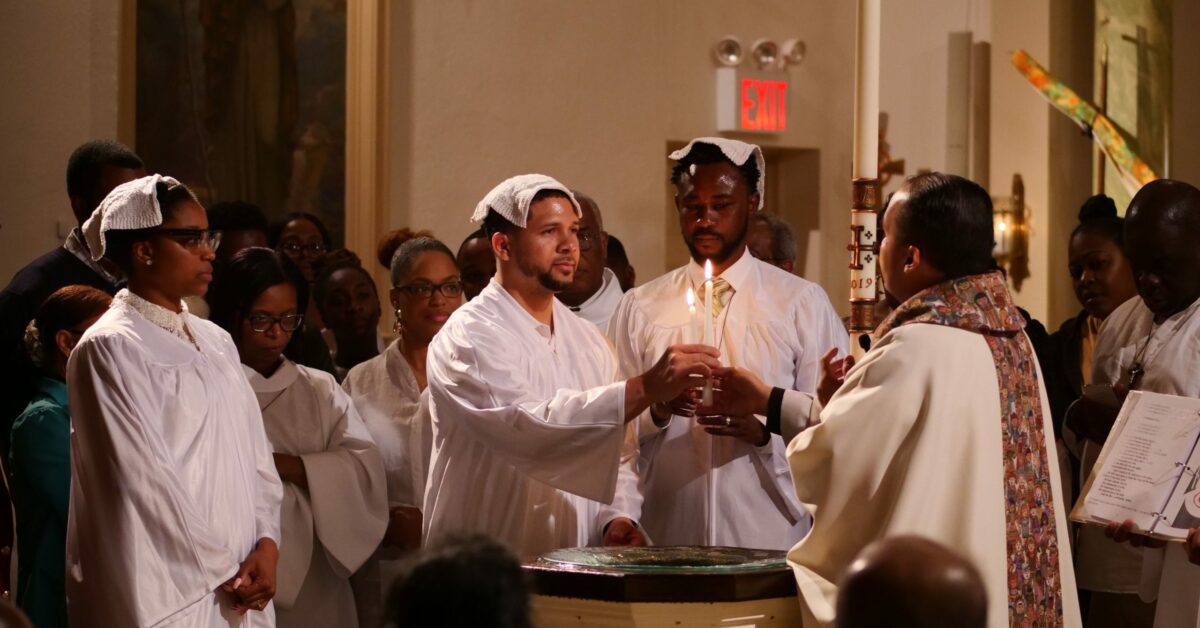A Ritual Journey: The Rites of Faith Formation
This week I am beginning an ongoing exploration of the rites of faith formation. In order to explore the rites that can be used as a central experience of faith formation, I need to outline the structural process of the catechumenate. So, for those for whom this may be an elementary review, my apologies. As a holistic experience of faith formation, the catechumenate employs a variety of things to facilitate conversion and form the life of faith, all of them experiential in nature: individual mentoring, small group discussion, acts of service, lecture, reflection, journaling, corporate and personal prayer, fellowship (especially over meals), shadowing the baptized, preaching, and ritual action. Of the liturgical rites Roman Catholic priest Ronald Lewinski says, “These liturgical rites flow naturally from the spiritual formation and catechesis that is offered…. [They] are integral to the whole process of conversion and initiation” (An Introduction to the RCIA, Chicago: Liturgy Training Publications, 2017, 21). The liturgical rites mark a catechumen’s journey through faith formation as they gradually cross the threshold into life in Christ within the assembly of God’s people.
As I noted in a previous post, Diana Macalintal outlines two catechetical paths in faith formation that are interdependent but distinct: the Ritual path and the Catechetical path. The Ritual path is the formation that happens through the crossing of the various ritual stages that the catechumen experiences. They focus on the gradual transition of the person in terms of their order/place within the Christian community: from inquirer to catechumen to neophyte. Formation happens through the Word and ritual action in the liturgies of the church. The second path she labels the Catechetical path. This path is less structured and attends to the level of faith instruction in the Word that the individual person has received. A congregation ideally nurtures both paths in order to have a vibrant catechumenate.
The Ritual path is composed of four periods and three transitions between those periods. [Welcome to Christ adds one additional transitional rite near the end of the post-baptismal mystagogy]. I’ll use the terminology of both the Roman Catholic Rite of Christian Initiation of Adults (RCIA) and the Lutheran Welcome to Christ: Lutheran Rites for the Catechumenate (Minneapolis: Augsburg Fortress, 1997), divided by a slash.
- Period #1: Evangelization and Precatechumenate/Inquiry
- Transition #1: Acceptance into the Order of Catechumens/Welcome of Inquirers to the Catechumenate
- Period #2: Catechumenate/Inquiry [Welcome to Christ doesn’t distinguish precatechumenate and catechumenate periods]
- Transition #2: Rite of Election for Initiation/Enrollment of Candidates for Baptism
- Period #3: Purification and Enlightenment/Preparation for Baptism
- Transition #3: Rites of Initiation at Easter Vigil: Baptism, Sealing (Chrismation/Confirmation), Lord’s Supper/Baptism and Communion at the Vigil of Easter
- Period 4: Post-Baptismal Mystagogy/Baptismal Living
- Transition #4: Affirmation of the Vocation of the Baptized in the World
That is the basic outline of the Ritual Path. In coming weeks I will examine the rites associated with each of these periods and rituals. If you are interested in a copy of a particular rite from one of the resources email me either through FormingLutherans.org or at burresonk@csl.edu.
